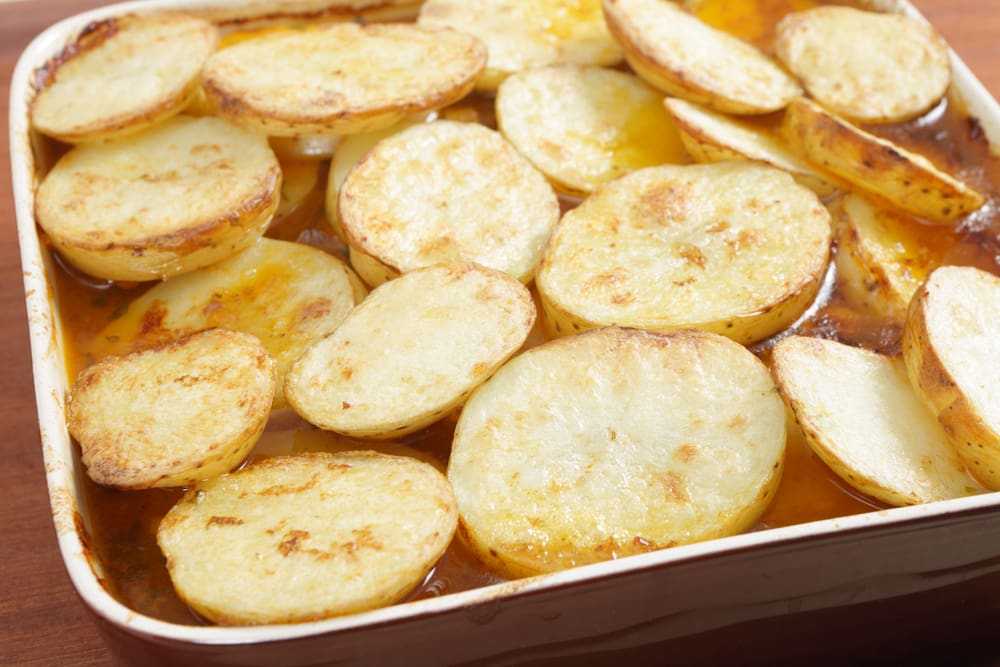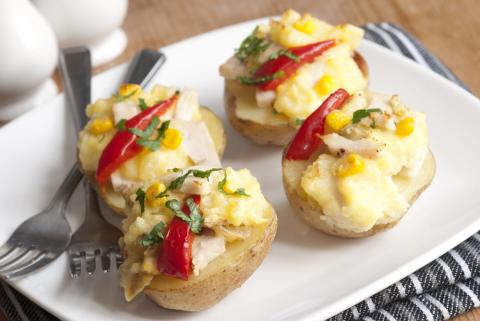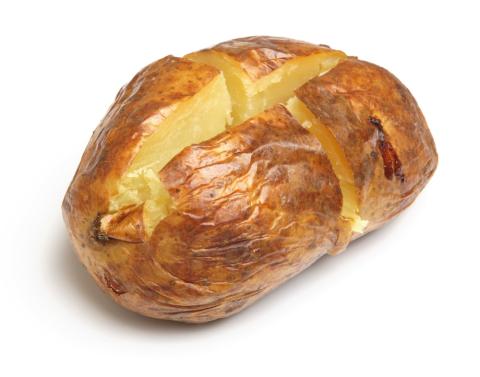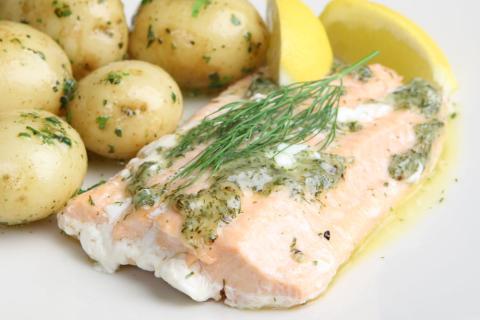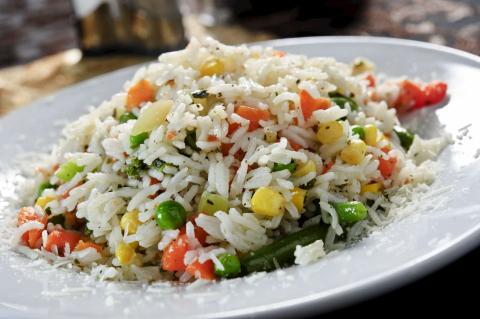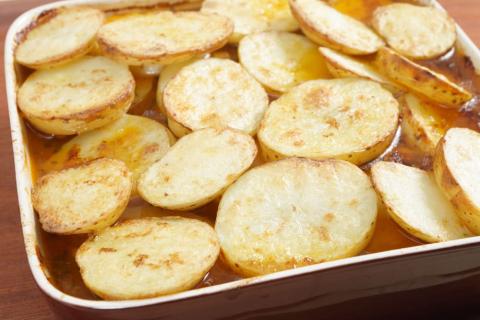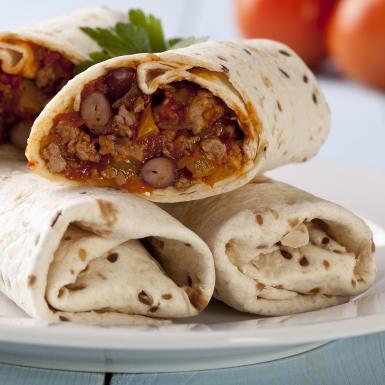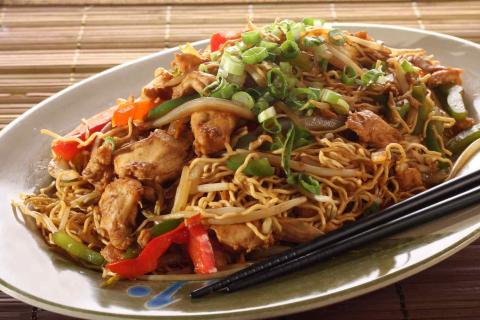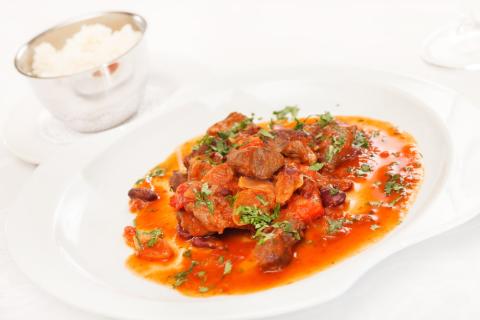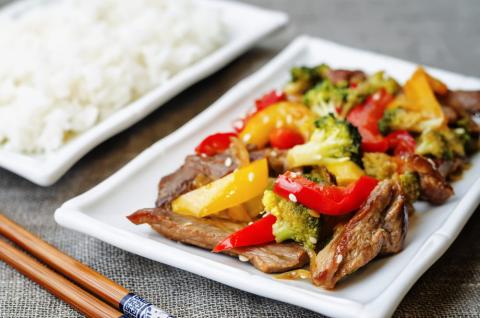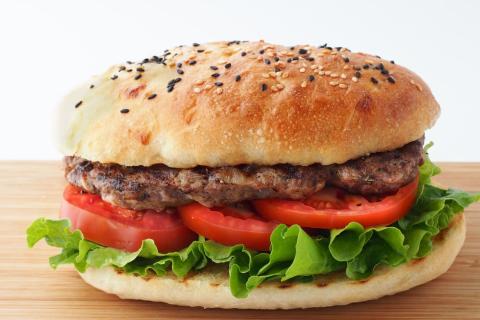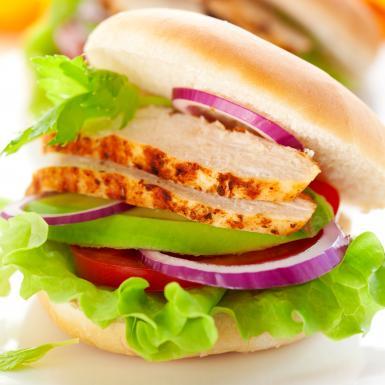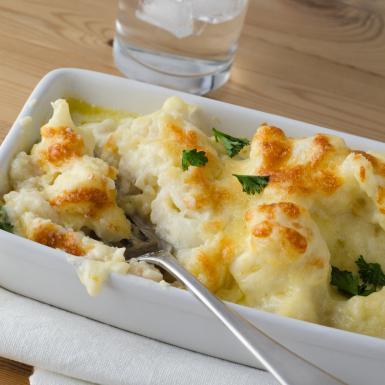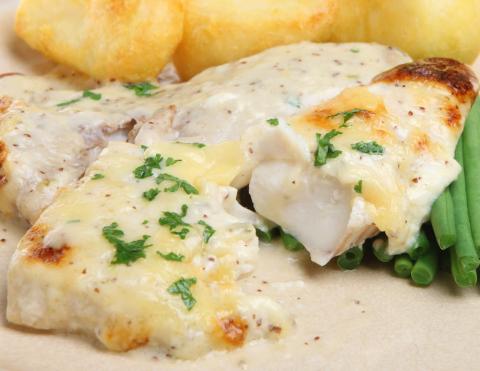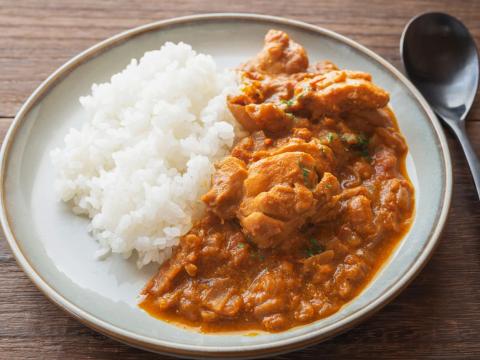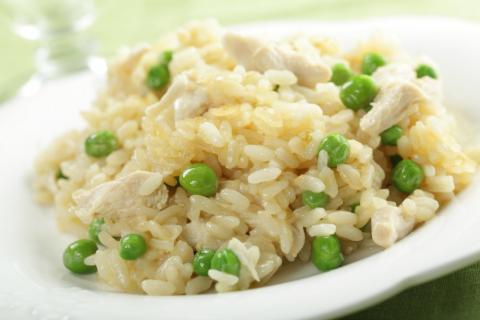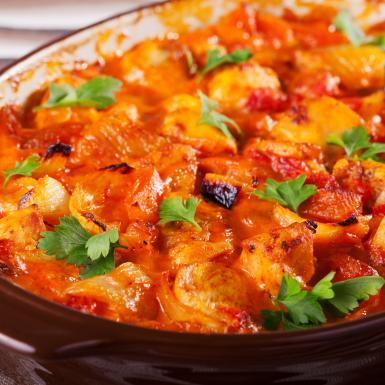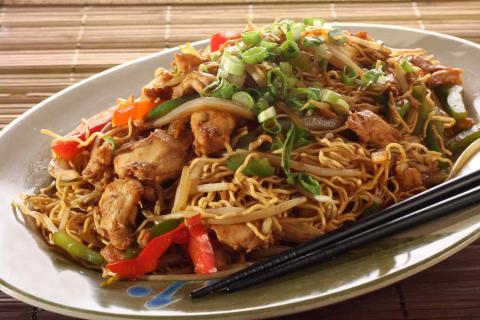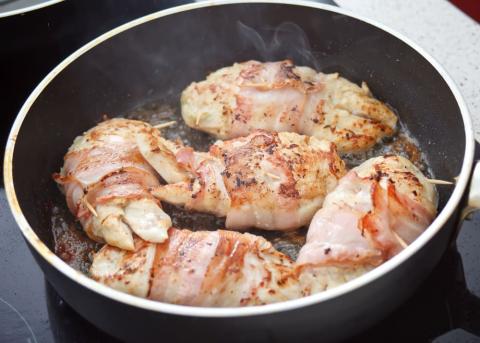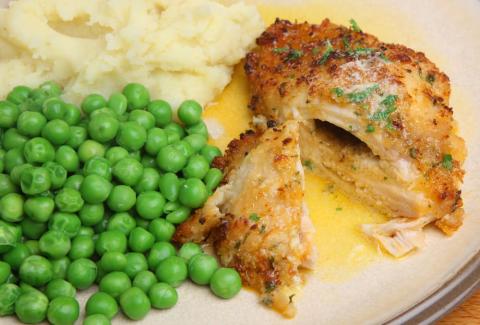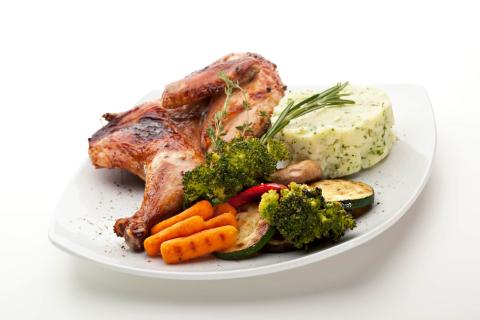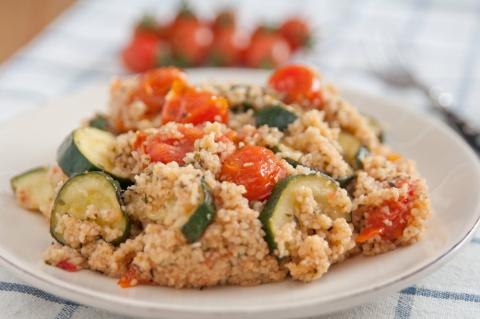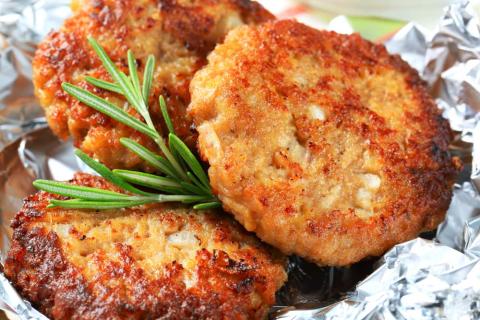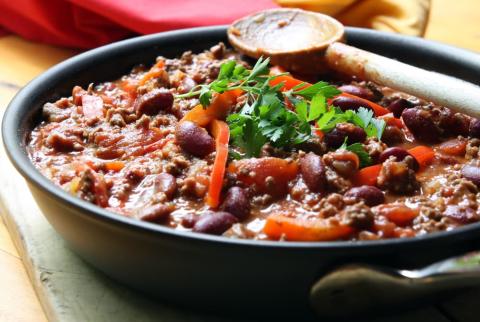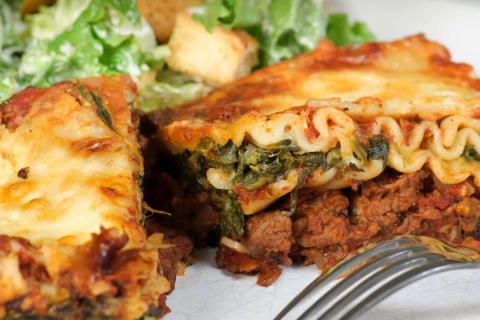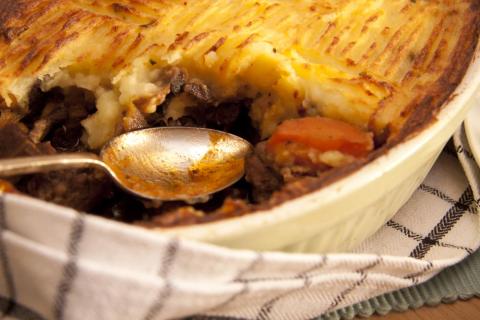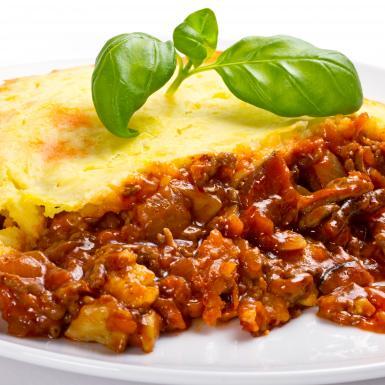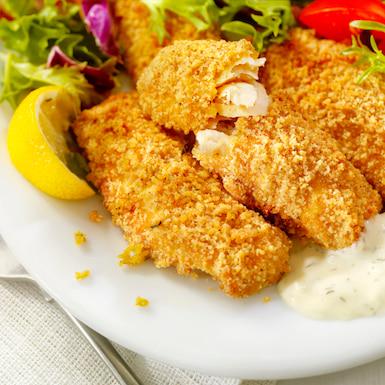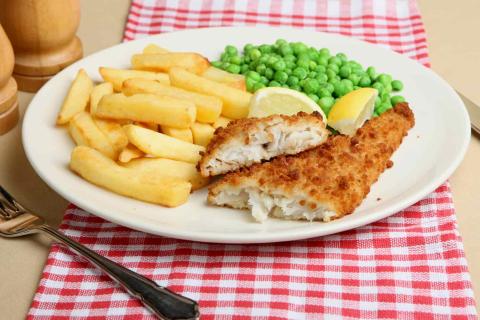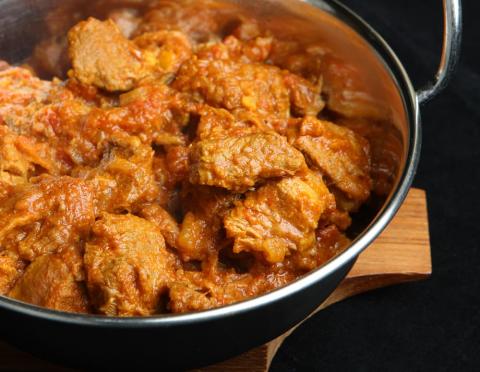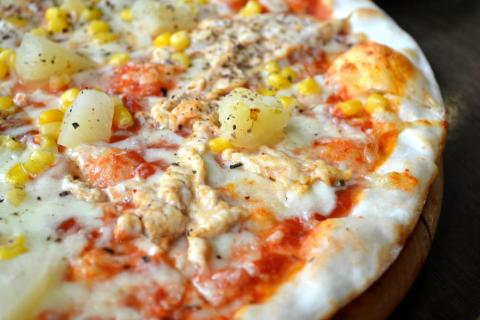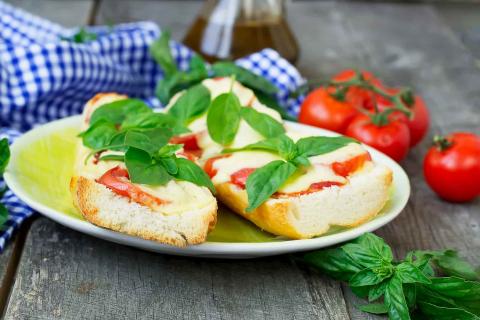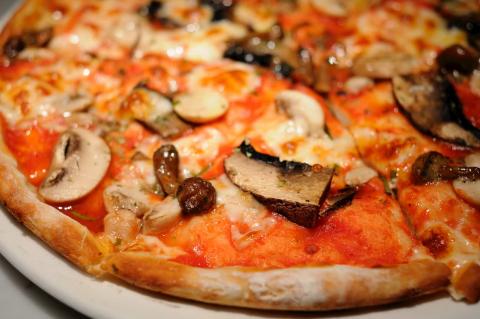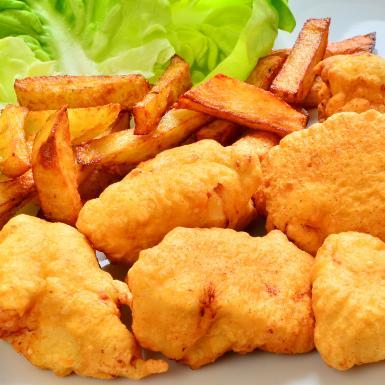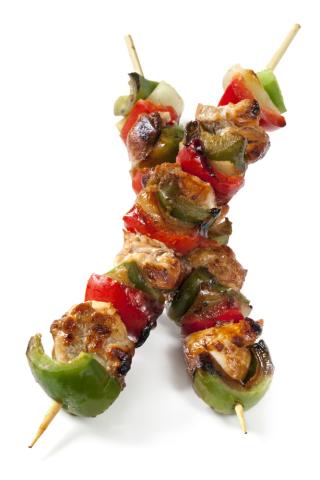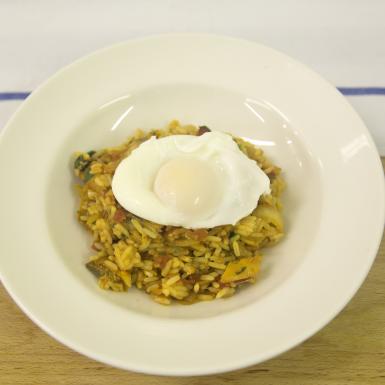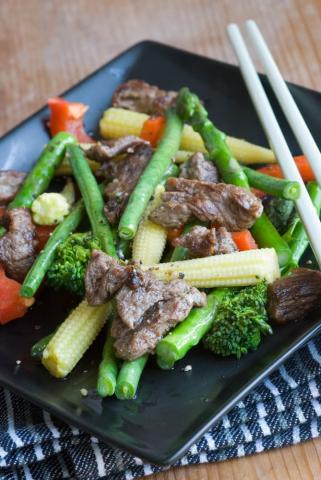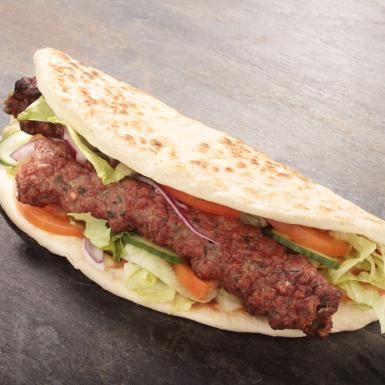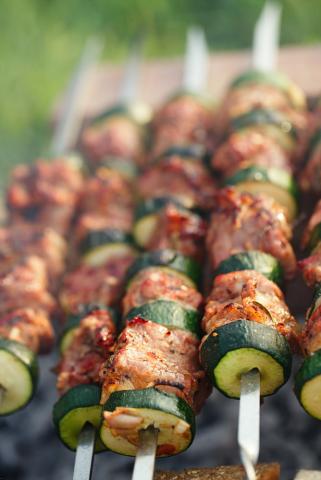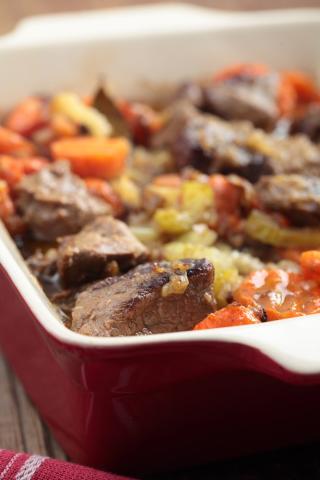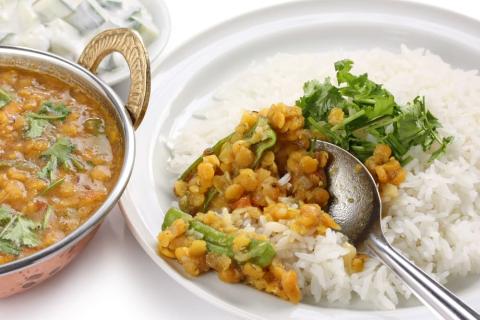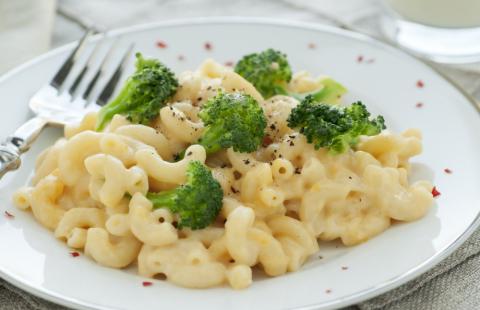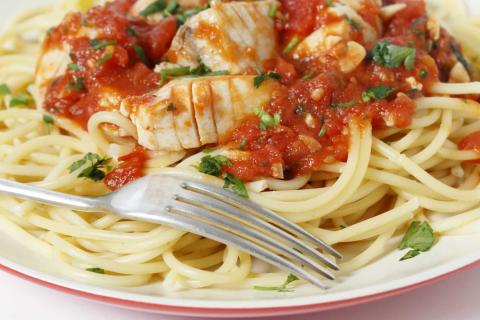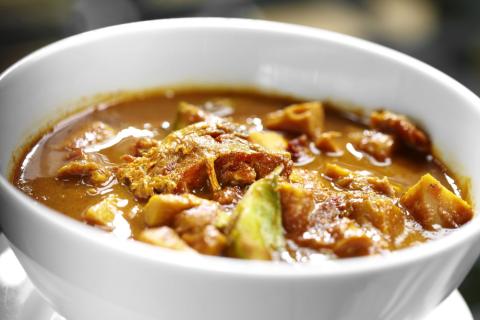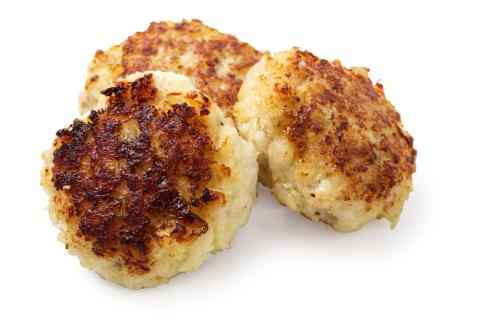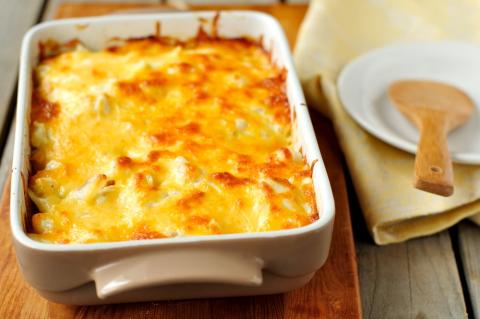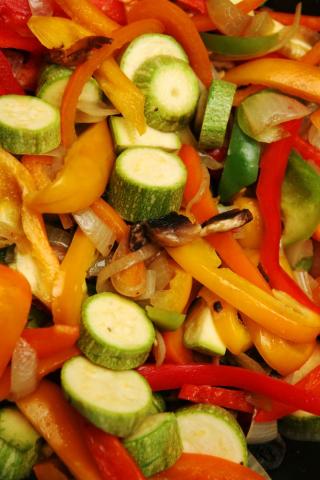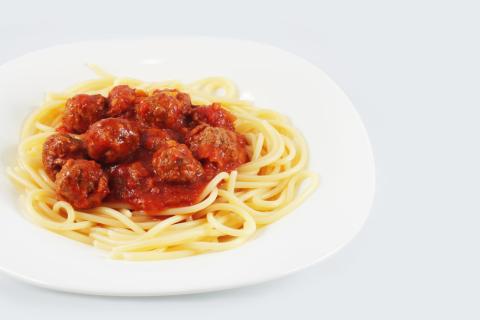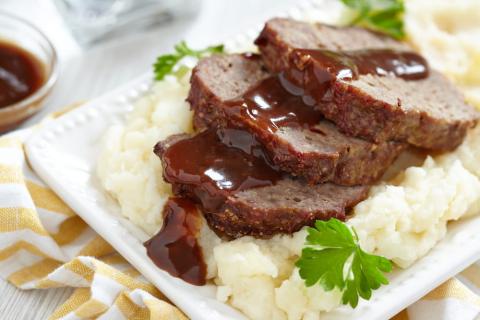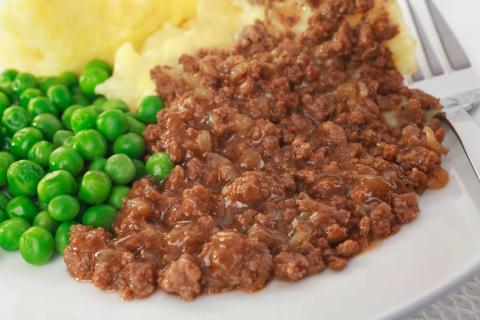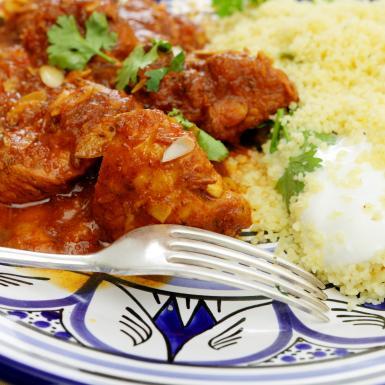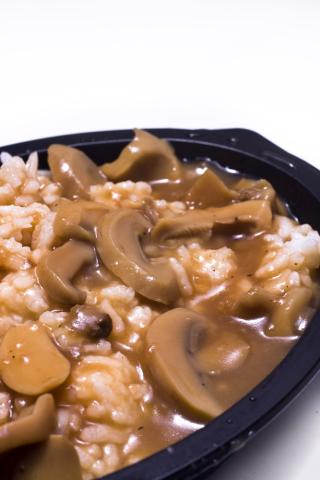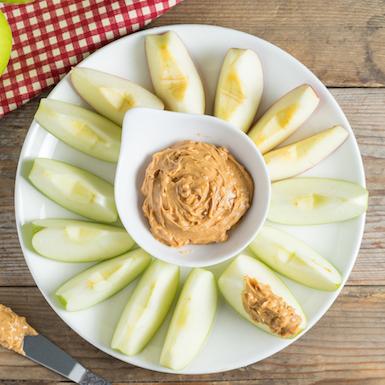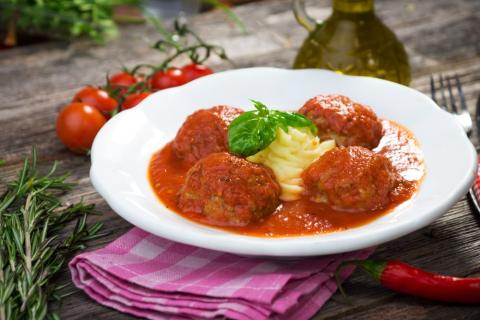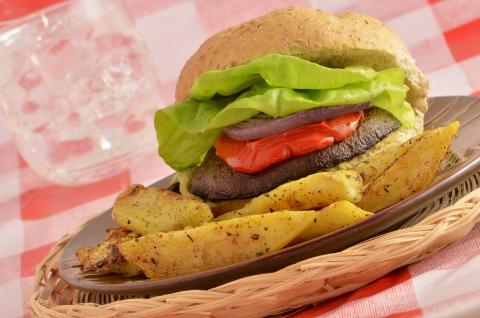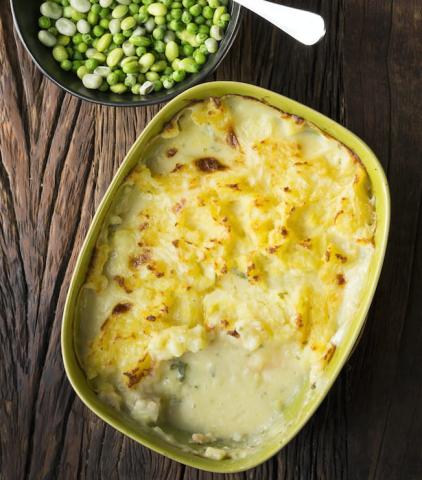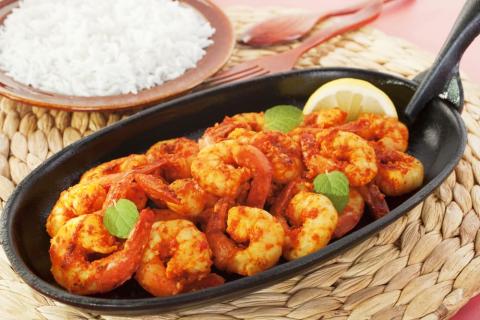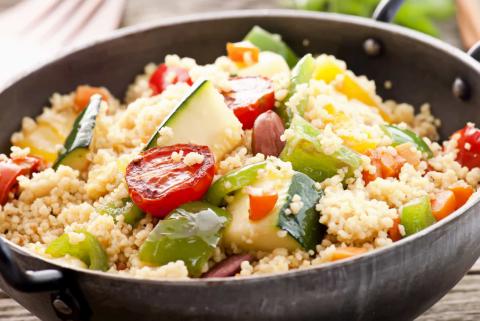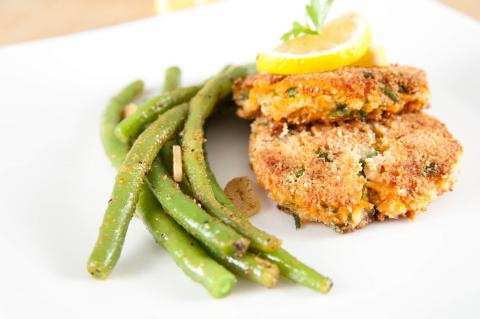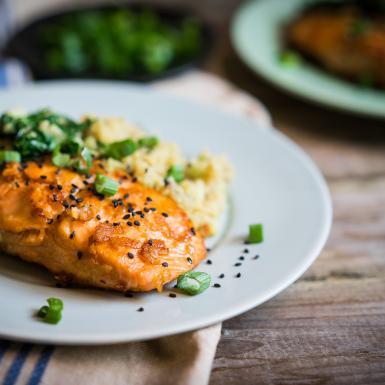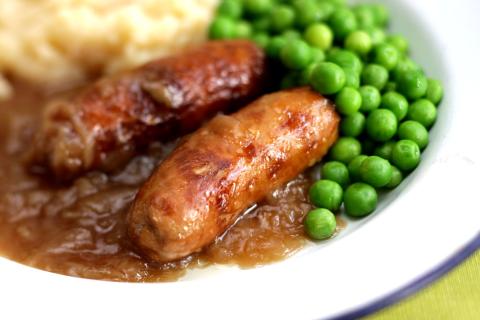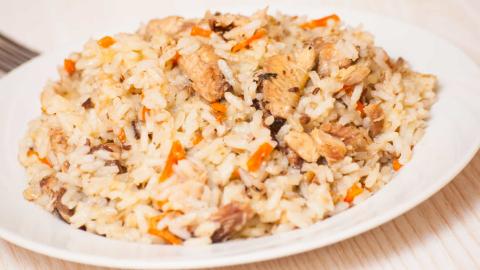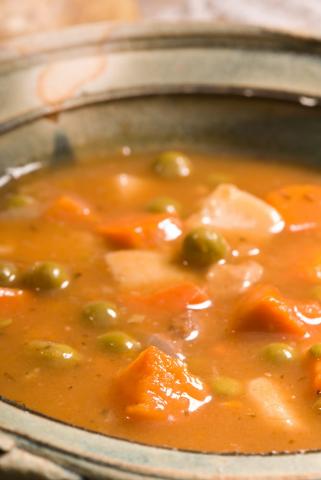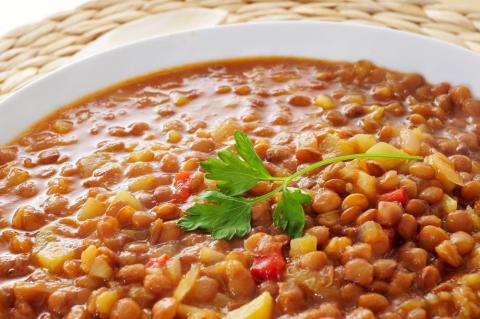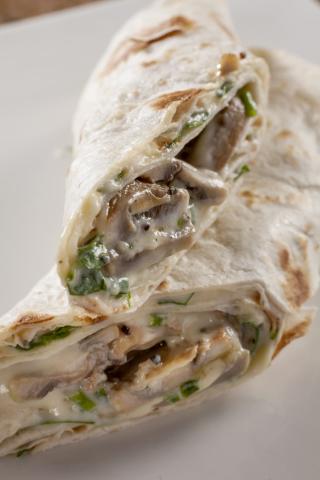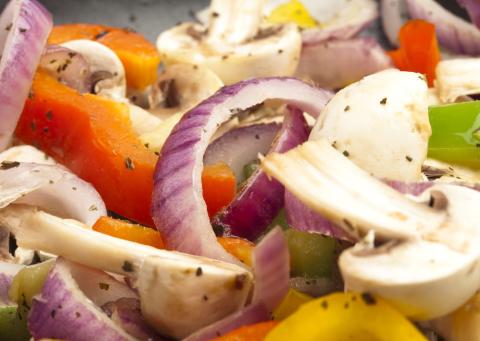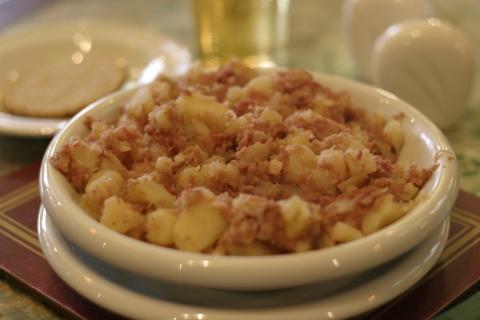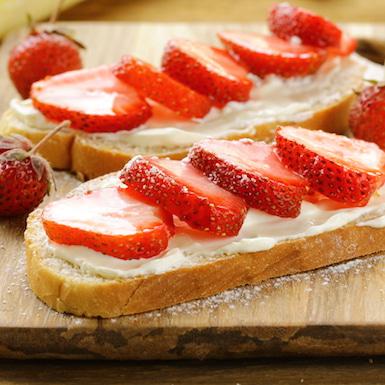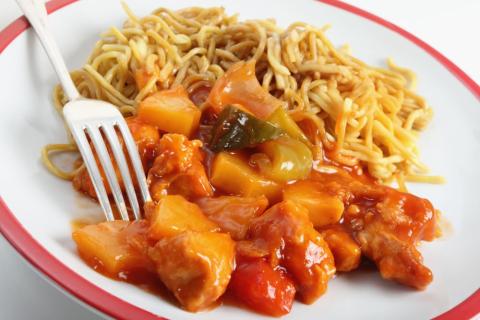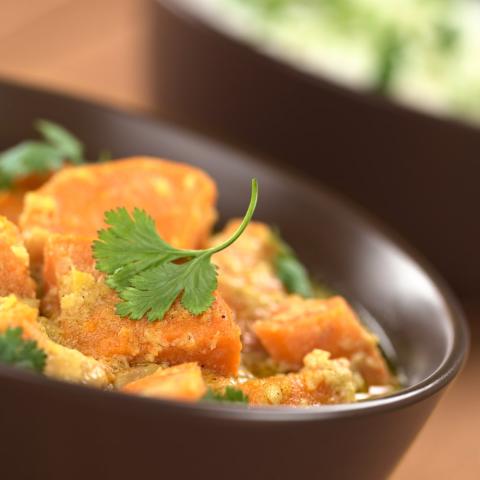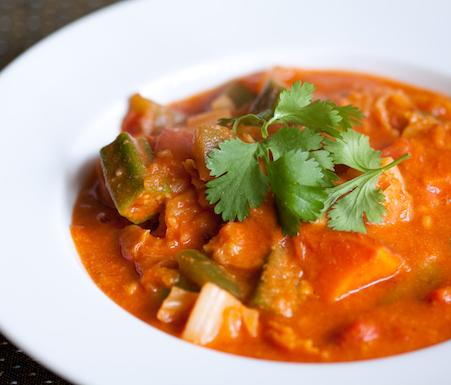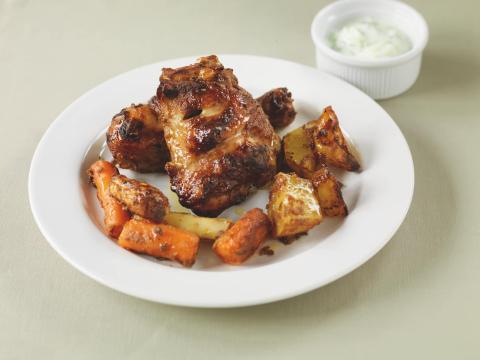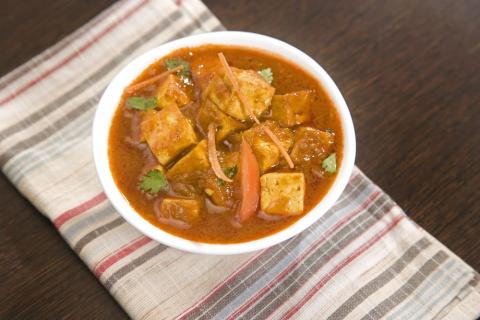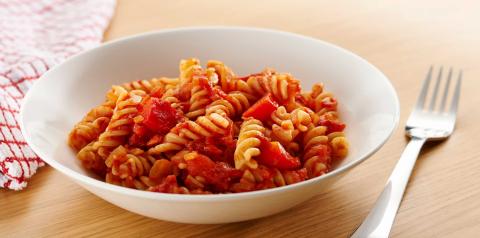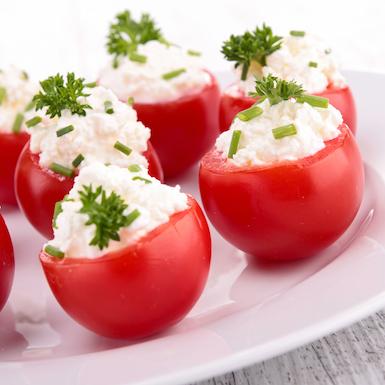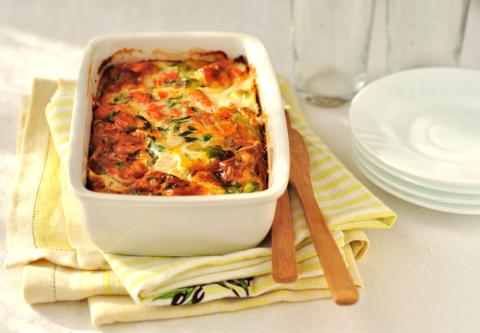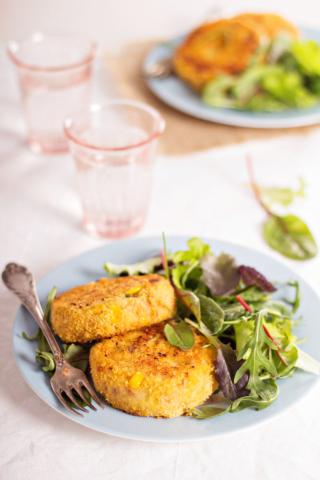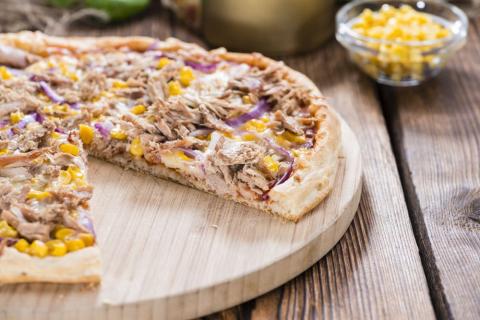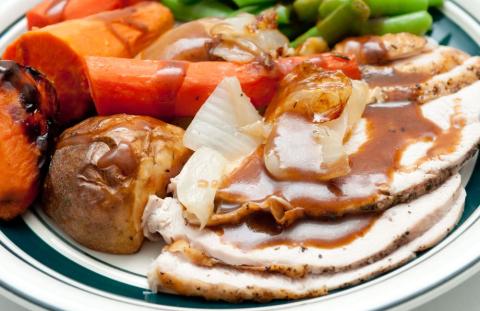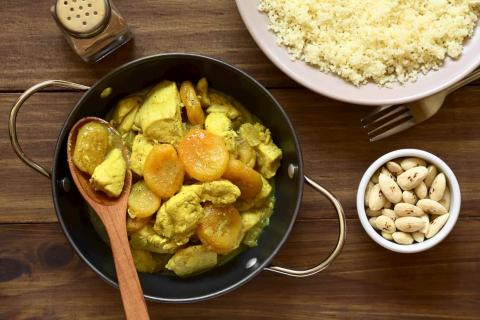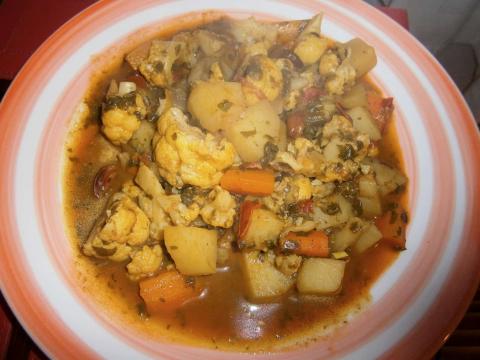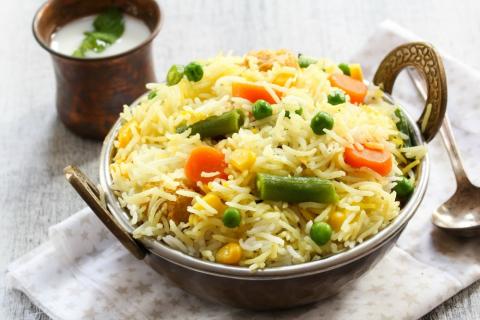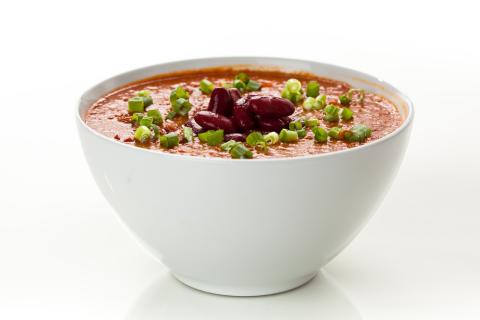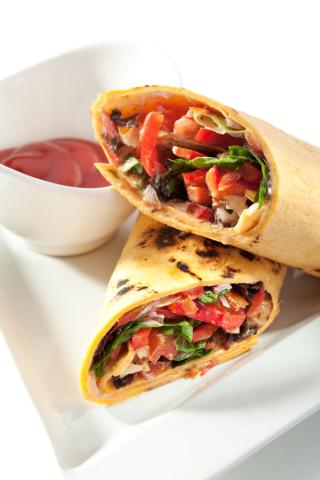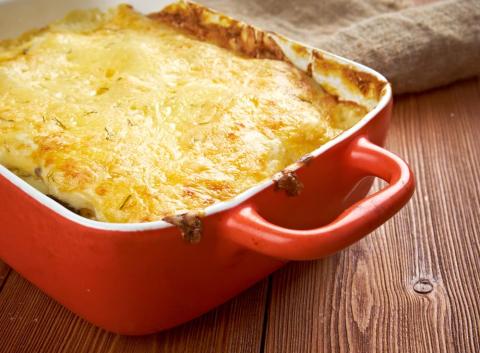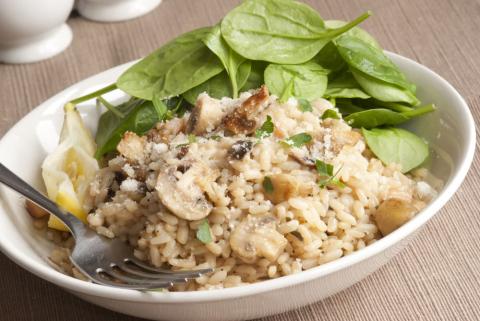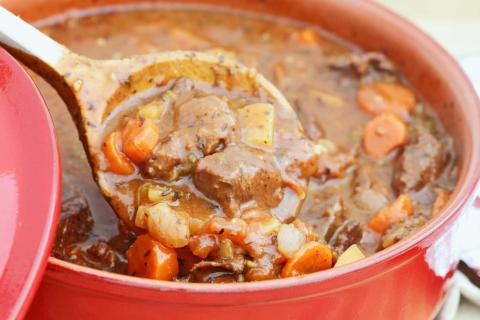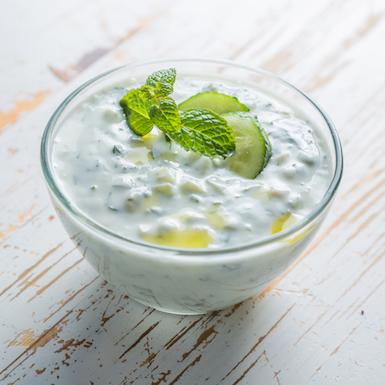- 2 Medium Sized (300g) Onions
- 2 Large Sized (280g) Carrots
- 2 Tablespoons (20ml) Vegetable Oil
- 4 Large Sized (800g) Potatoes
- 1 Reduced Salt and Sugar Tins (400g) Baked Beans
- 1 Tins (400g) Red Kidney Beans
- 2 Tablespoons (30g) Tomato Puree
- 1 Tins (400g) Chopped Tomatoes
- 4 Teaspoons (4g) Mixed Herbs
- 1 Pinch (1g) Ground Black Pepper
Ingredients
Allergy Disclaimer
Always check the label of each ingredient for allergy warnings.
Method
- Turn oven on to 200oC / 180oC fan oven / 400oF / gas mark 6.
- Wash potatoes and boil in their skins until cooked through. Leave to cool then slice.
- Chop onions finely then fry in oil until golden brown.
- Wash and slice carrots and add to the onions. Then stir in tomato puree, add baked beans, chopped tomatoes and mixed herbs.
- Drain and rinse kidney beans and add to the pan. Bring to boil and then simmer on a low heat for 10-15 minutes.
- Transfer to an ovenproof dish and top with sliced potatoes.
- Cook in oven for around 30 minutes until the potatoes have crisped.
Time Saver Tips
This dish can be prepared in advanced and then reheated/cooked in oven when ready. Carrots and potatoes don’t need to be peeled, just washed. Potatoes can be added to the pan and eaten as a stew rather than baking in the oven.
Nutritional Information
Based on a single serving of 535g (% of an adult's reference intake)
Energy
401 kcals ( 20 %)
1,685 kJ ( 20 %)
Fat
1.1 g ( 6 %)
Saturates
71.2 g ( %)
Sugar
19.3 g ( 21 %)
Salt
1.6 g ( 27 %)
Detailed nutritional information
| Per 100g | Per 535g serving | |
|---|---|---|
| Energy Kcals | 75 | 401 |
| Energy Kj | 315 | 1,685 |
| Protein | 3.1 g | 16.6 g |
| Total Fat | g | g |
| Saturated Fat | 0.2 g | 1.1 g |
| Carbohydrates | 13.3 g | 71.2 g |
| Total Sugars | 3.6 g | 19.3 g |
| NSP Fibre | 2.5 g | 13.4 g |
| Sodium | 124 mg | 663 mg |
| Salt | 0.3 g | 1.6 g |
Find out about nutritional labelling
Nutrition labels on the front of packaging
- Most of the big supermarkets and many food manufacturers display nutritional information on the front of pre-packed food.
- Front of pack nutrition labels provide information on the number of grams of fat, saturated fat, sugars and salt and the amount of energy (in kJ and kcal) in a serving or portion of a recipe.
- The labels also include information about reference intakes (expressed as a percentage) which are guidelines about the approximate amount of particular nutrients and energy required for a healthy diet.
- The colour coding tells you at a glance if the food has high (red), medium (amber) or low (green) amounts of fat, saturated fat, sugars and salt.
- The more greens on the label, the healthier the choice
- Amber means neither high nor low, so you can eat foods with all or mostly ambers on the label most of the time.
- Reds on the label means the food is high in that nutrient and these are the foods we should cut down on. Try to eat these foods less often and in small amounts.
Food shopping tips
If you’re trying to decide which product to choose, check to see if there's a nutrition label on the front of the pack. This will help you to quickly assess how your choices stack up. You will often find a mixture of red, amber and green colour coding for the nutrients. So when you're choosing between similar products, try to go for more greens and ambers and fewer reds if you want to make a healthier choice.
 Activities & Play
Activities & Play Behaviour
Behaviour Childcare
Childcare Development & Growing Up
Development & Growing Up Family, Friends & Relationships
Family, Friends & Relationships Feeding Your Baby
Feeding Your Baby Food & Eating
Food & Eating Health & Safety
Health & Safety Mental Health & Wellbeing
Mental Health & Wellbeing Money & Work
Money & Work Online Behaviour & Safety
Online Behaviour & Safety Pregnancy & First Days
Pregnancy & First Days School & Education
School & Education Sleep
Sleep

